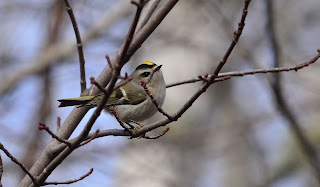NATURE MONCTON NATURE INFORMATION LINE
Dec 21, 2021 (Tuesday)
To respond
by e-mail, please address your message to the information line editor, nelsonpoirier435@gmail.com .
Please
advise the editor at nelsonpoirier435@gmail.com
if any errors are noted in wording or photo labelling.
For more information on Nature Moncton, check the website at www.naturemoncton.com .
Edited by:
Nelson Poirier nelsonpoirier435@gmail.com
**Jamie Burris shares a few photos
of the 24 species they were able to tally in zone D during the Moncton
Christmas Bird Count on Saturday. It was interesting to note that included a Pine
Siskin that has not been appearing in numbers.
Jamie also
shares a photo of a large Privet hedge they found on their outing commenting they don't see
many pictures of it on the blog.
Jamie just beat us to the punch as we also noticed a large Privet hedge on Saturday but then later saw a very similar looking bush and berry cluster on a trail away from human habitation. It was Black Huckleberry with photo of the similar berries but very different winter buds attached. Privet shrubs grow much taller than huckleberry if not trimmed as is often done with a cultivar hedge. There is a lone escapee Privet shrub growing aside Jones Lake in Moncton that is approximately 6 m. in height.
Jamie also had a special visitor to their Riverview
back yard backyard on Dec 2nd...a Great Horned Owl!
**Rheal Vienneau was a bit surprised to look out his Dieppe window to see
4 White-tailed Deer enjoying black oil sunflower seed put out for his 6
resident Ring-necked Pheasants. Take a look at the action in the attached link
and no, that’s not Rudolph!
https://www.dropbox.com/s/cab0h4f5eb2vrtg/Deer%20in%20back%20yard%20.MOV?dl=0
**While on the Christmas Bird Count on Saturday, Brian Stone and I noted
the clinging berries of a Privet hedge as did Jamie Burris. Privet is a cultivar and expected to be seen
around human habitation. It was therefore a surprise to see a similar shrub
with similar clinging berries on a woods trail in a wet area. On closer look,
it was obvious the winter buds were noticeably different, and the branching was
alternate. Privet branching his opposite. The wild plant turned out to be Black
Huckleberry. The resemblance at a distance was striking.
The clinging berries of both of these plants are choice for fruit
connoisseur birds.
I recall a Northern Mockingbird that very aggressively defended a hedge
of Privet berries all one Winter in Bouctouche. It put the run to even flocks
of European starlings in very short order.
Black Cherry is not a common tree in this area. We came across an area of
several Black Cherry trees and all were affected with the galls of the Black
Knot (Apiosporina morbosa). Black Knot is quite common in Chokecherry and Pin
Cherry but expresses itself differently in the Black Cherry.
I had thought Black Knot only affected members of the Prunus species. We
noted some large gall like masses in a few nearby maple trees. Mr. Google
stated it can also affect maple trees. I had never seen it before in maple
trees but it certainly appeared exactly the same as the nearby Black Cherry trees.
Nelson Poirier
Nature Moncton












No comments:
Post a Comment